Abstract
Italian-type salamis contaminated with Aspergillus flavus were more likely to develop aflatoxins during aging than were smoked Hungarian-type salamis under the same conditions. Temperatures below 15 C and humidities of less than 75% were found to prevent aflatoxin development during the aging of salami. The aging of salami for 8 weeks and the presence of curing ingredients, especially pepper and sodium nitrite, tended to reduce the amounts of aflatoxins found. Aflatoxins were produced by A. flavus and A. parasiticus on 6- to 9-month-old country cured hams during aging when the temperature approached 30 C.
Full text
PDF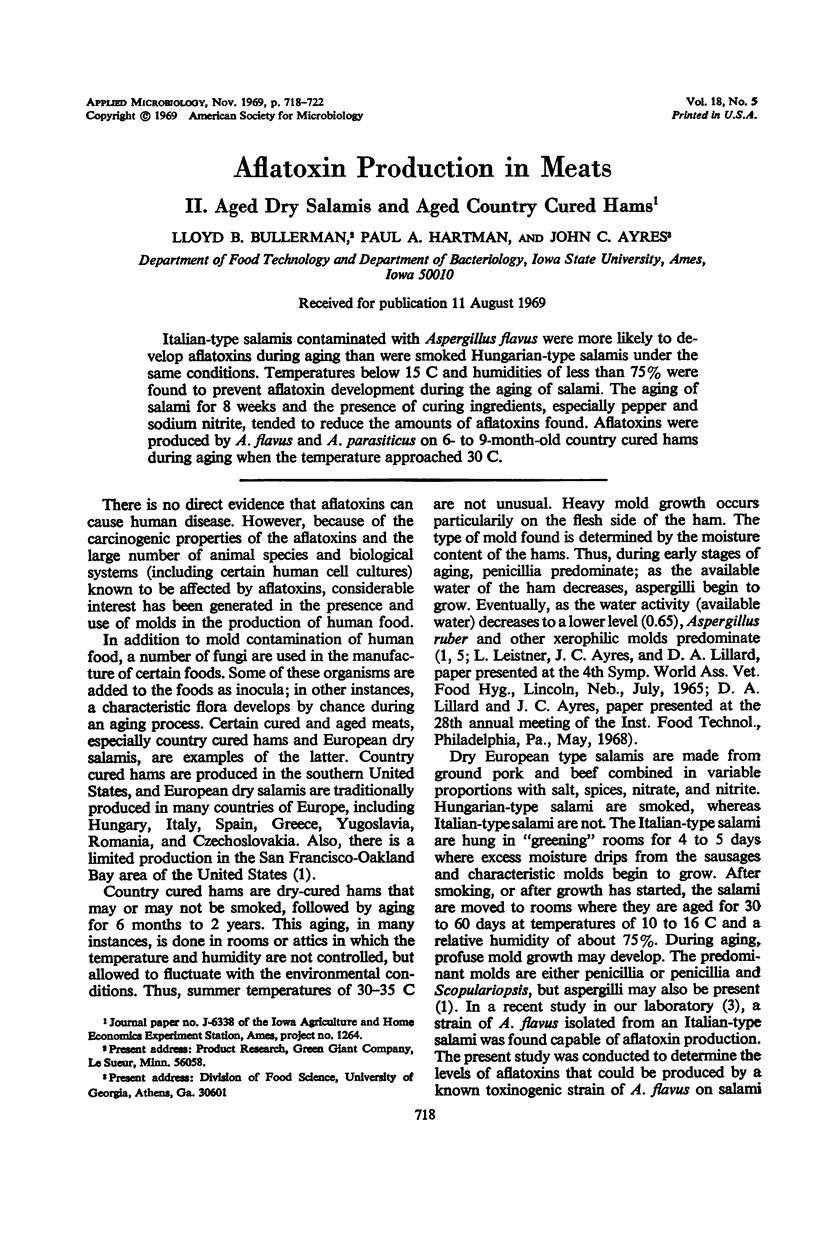
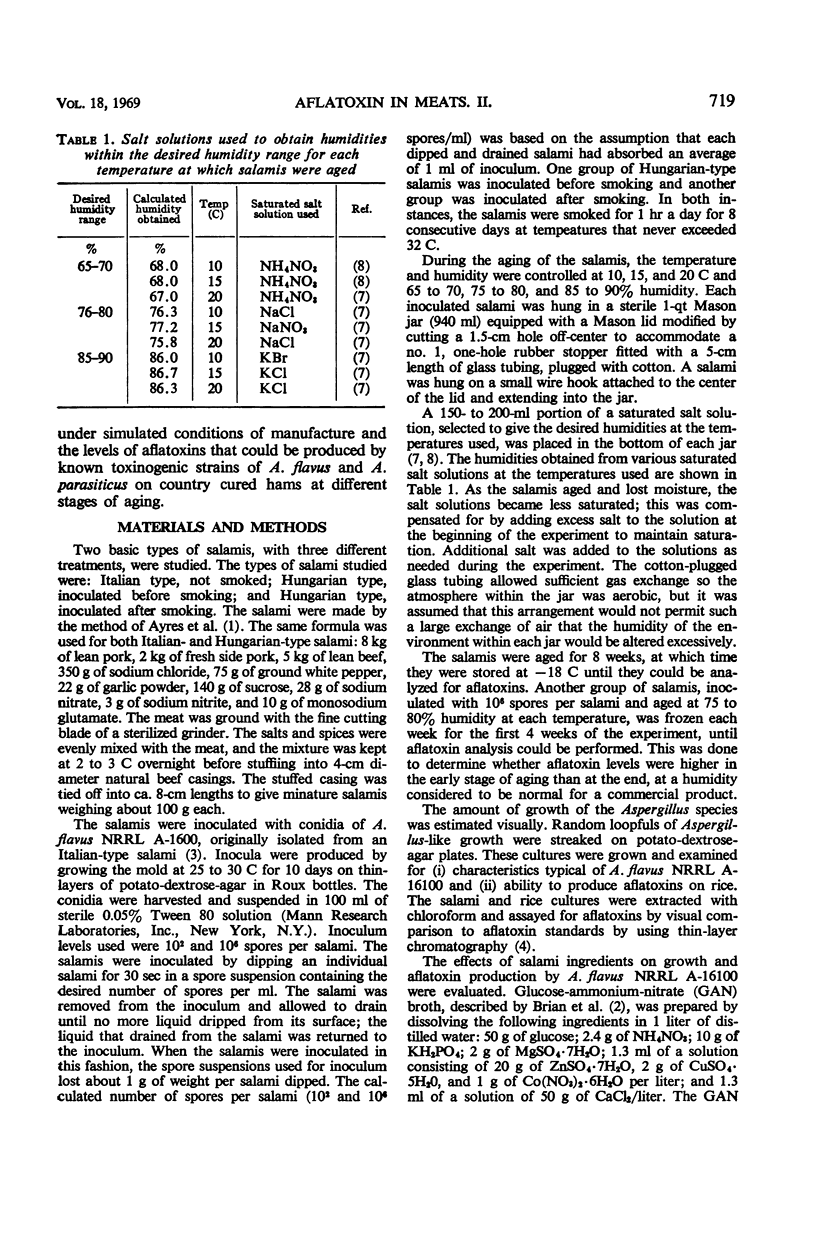
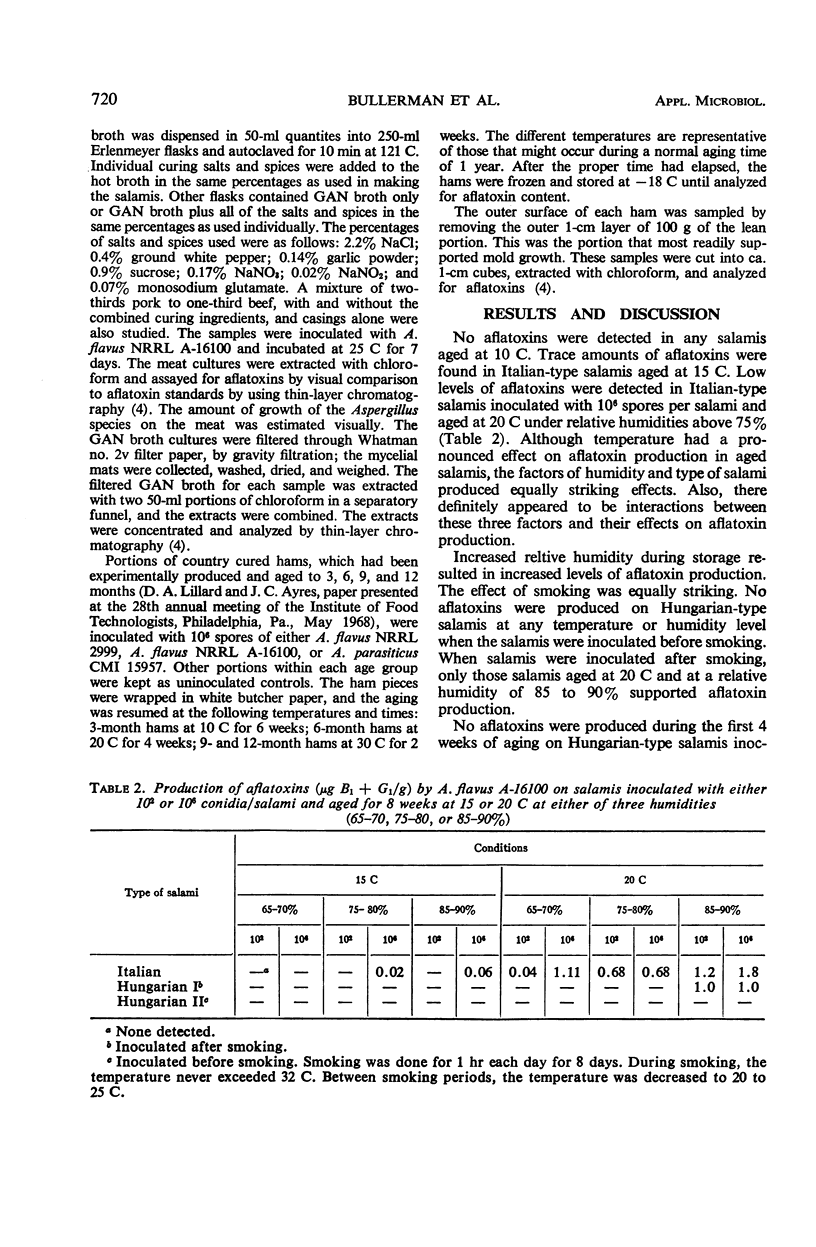
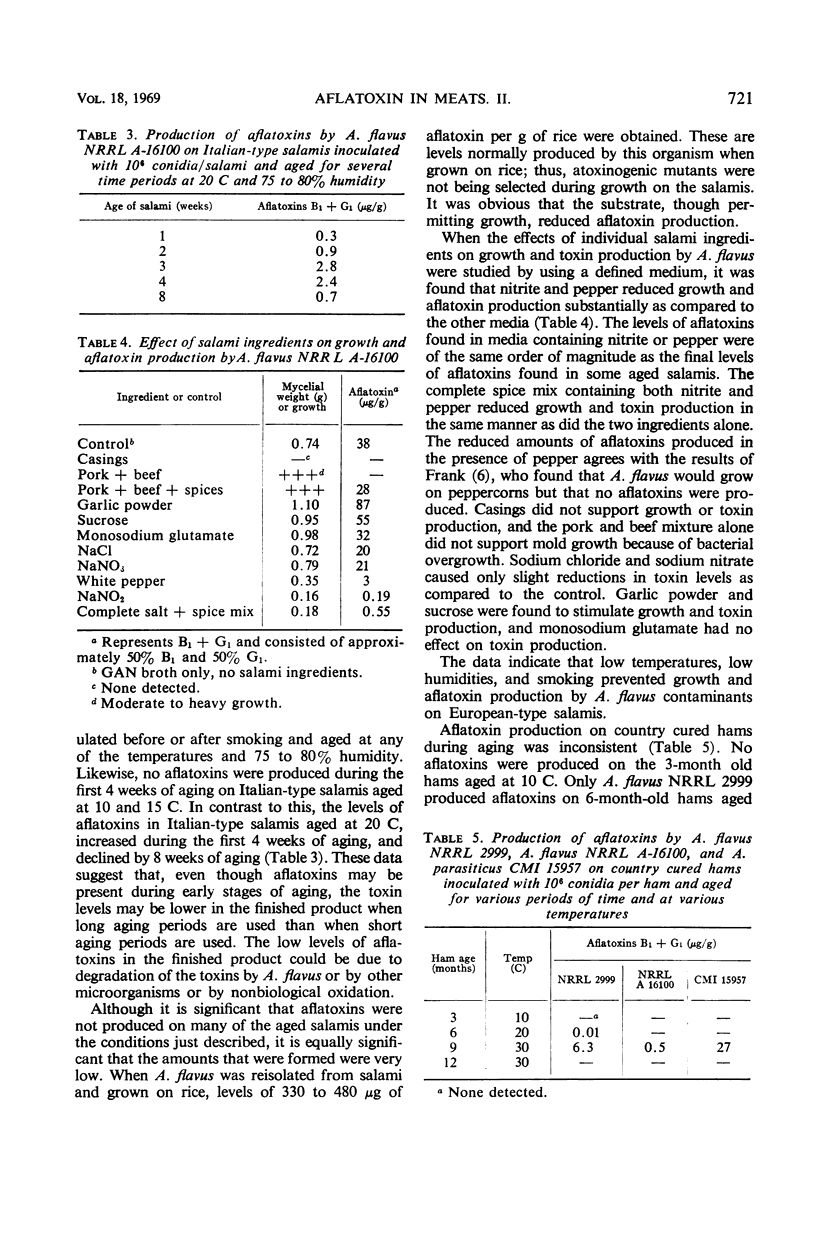
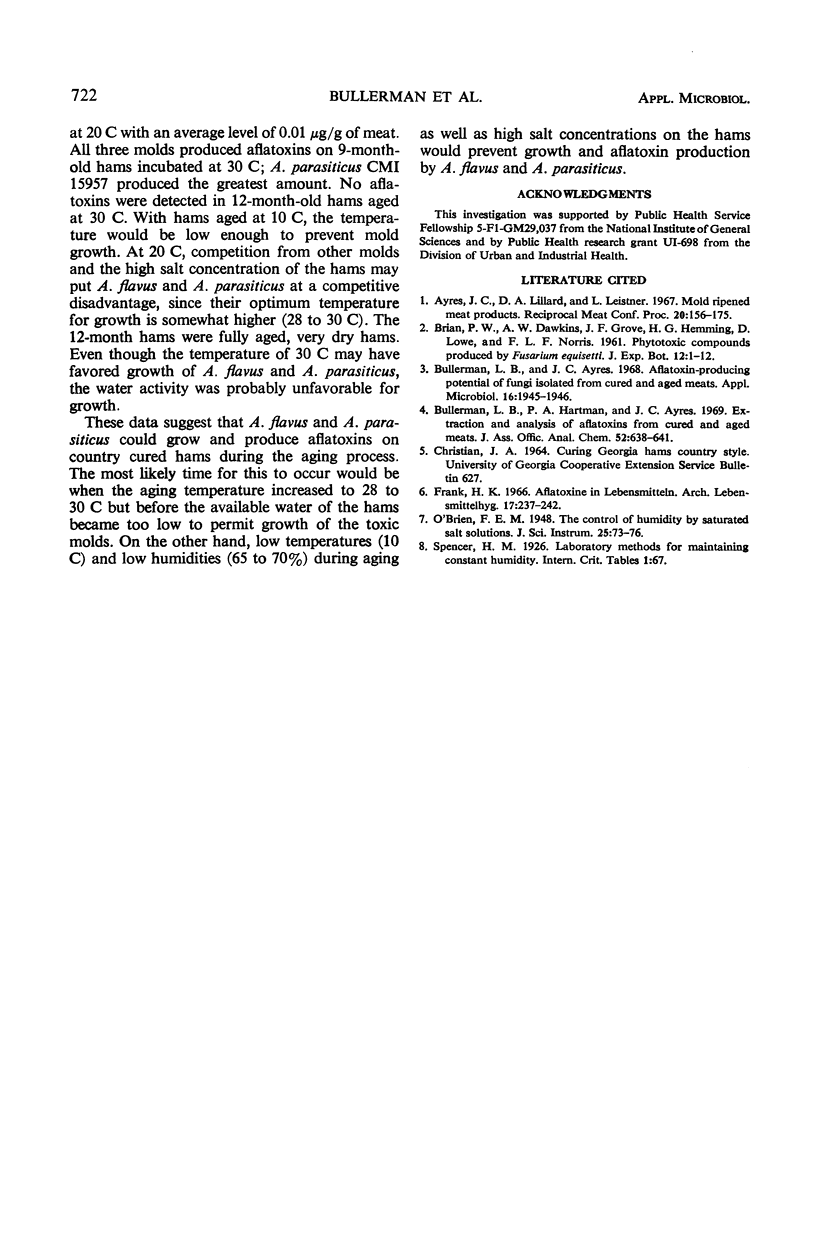
Selected References
These references are in PubMed. This may not be the complete list of references from this article.
- Bullerman L. B., Ayres J. C. Aflatoxin-producing potential of fungi isolated from cured and aged meats. Appl Microbiol. 1968 Dec;16(12):1945–1946. doi: 10.1128/am.16.12.1945-1946.1968. [DOI] [PMC free article] [PubMed] [Google Scholar]


